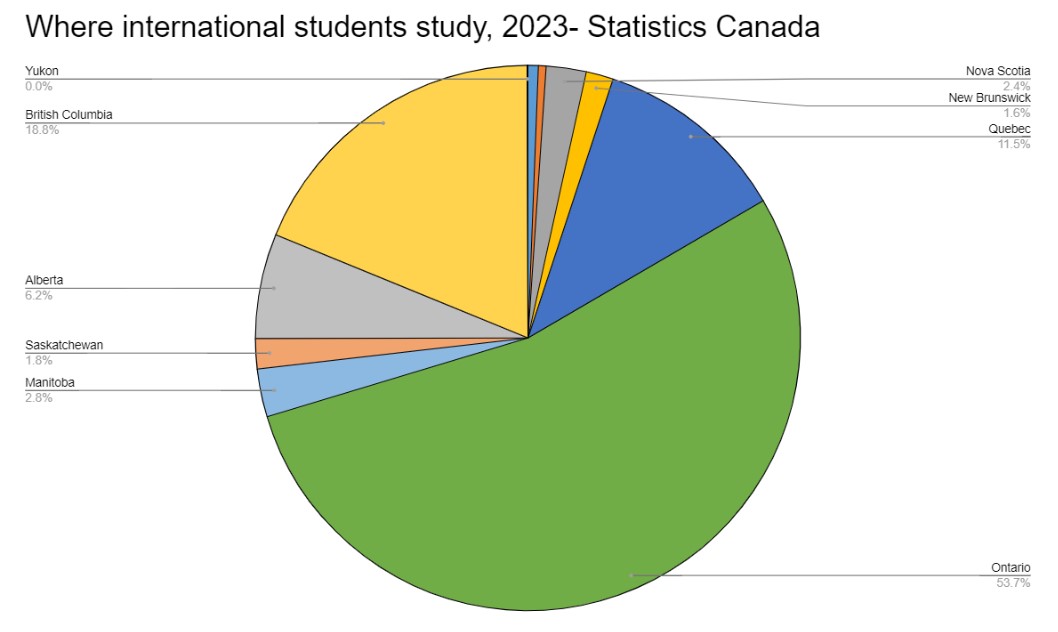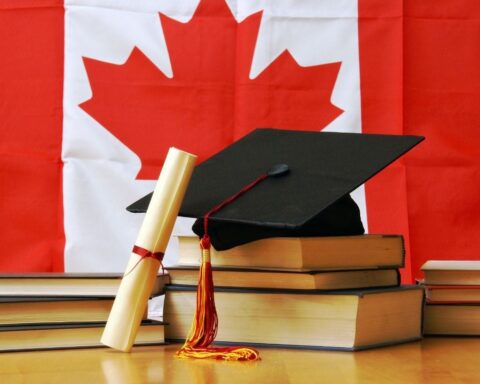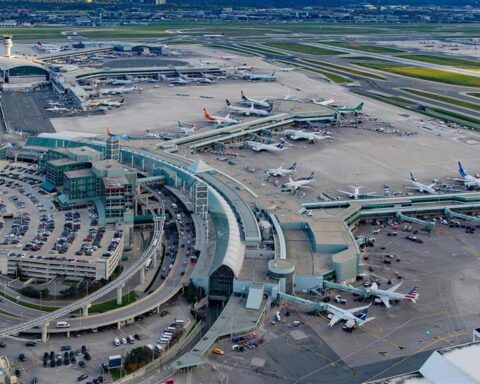The international student cap has exposed years of decreased funding for colleges and universities in Ontario and BC, according to data from Statistics Canada and industry experts.
Ontario’s colleges and universities receive less public funding as a proportion of their revenue than any other province while admitting the most international students, Statistics Canada data shows.
“This international student process is exploitative because it has to make up for governments not putting money into universities,” said Nigmendra Narain, president of the Ontario Confederation of University Faculty Associations (OCUFA).
Ontario needs to increase public funding for colleges and universities by 11.75 per cent for five years in order to make up for lost revenue from chronic underfunding and the federal international student cap, according to OCUFA’s Jan. 30 report.
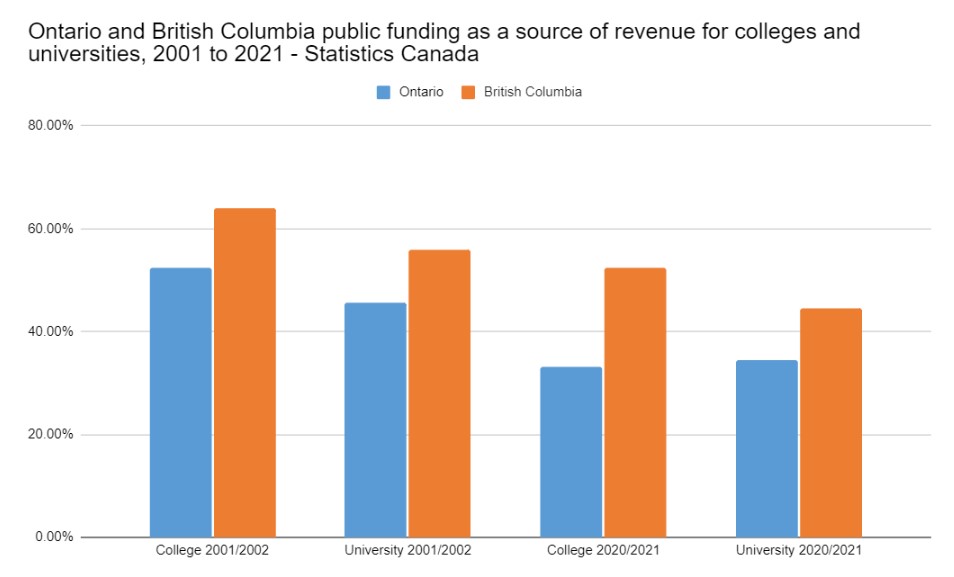
On Feb. 26, Ontario Minister of Colleges and Universities Jill Dunlop promised an additional $1.2 billion over three years for post-secondary institutions.
As much as $903 million of that will be towards a stabilization fund, while an additional $167.4 million will be for capital repairs and equipment.
Ontario colleges and universities received a total of $17.8 billion in government funding between 2019 and 2022, averaging $5.9 billion per year, Statistics Canada data shows.
The province’s blue-ribbon panel recommended raising domestic student tuition in Ontario by 10 per cent in November 2023 to make up for funding shortfalls, before the international student cap was announced.
But Ontario Premier Doug Ford has publicly said he won’t raise domestic tuition.
Most international students attend public institutions in Ontario and BC, where higher and uncapped tuition for students from outside of Canada have replaced declining funding from provinces, according to Statistics Canada.
Canada granted 684,385 international student visas last year with 53 per cent going to Ontario, 19 per cent to BC, and 11 per cent to Quebec, Immigration Refugee and Citizenship Canada (IRCC) data shows. That includes 441,005 students at public universities and colleges; 89,230 students at private post-secondary institutions; and 151,055 students at unstated or other education establishments.
Ontario post-secondary institutions received less public funding as a proportion of revenue than any other province in 2021-2022, the latest available figures from Statistics Canada show.
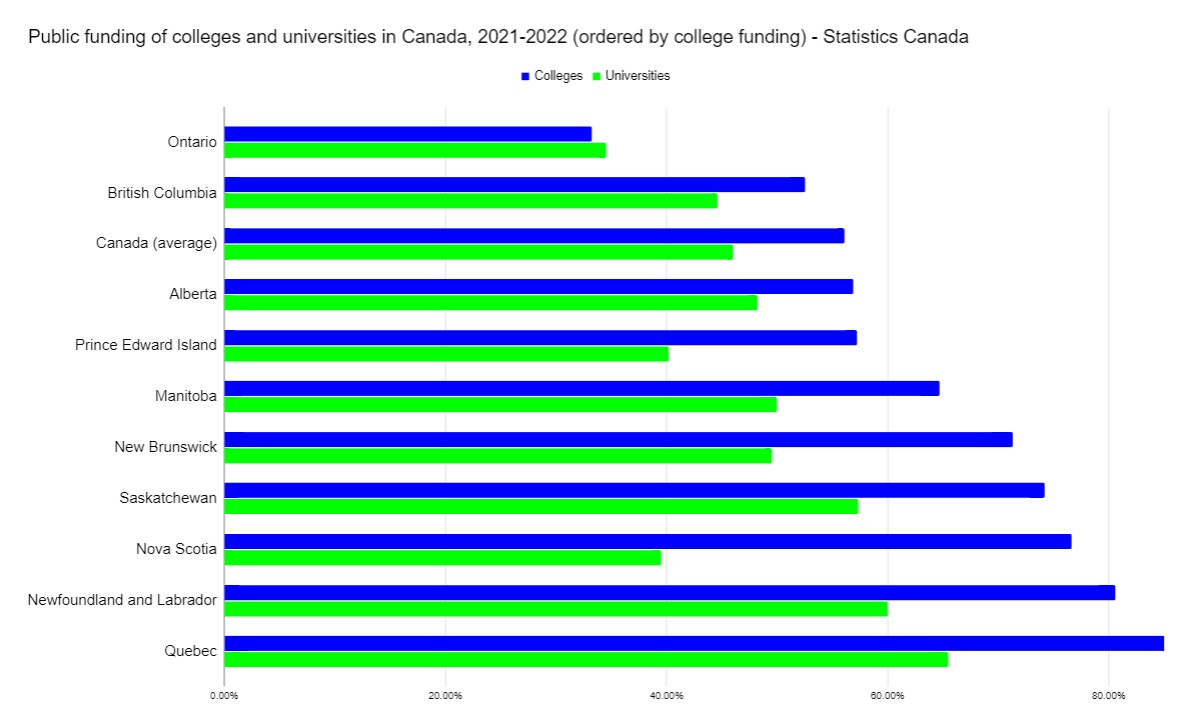
BC’s colleges received the second-lowest share of government dollars in the country that year, while BC universities were funded at just under the national average, numbers from Statistics Canada highlight.
“That has resulted in pushing the universities to look elsewhere, and where have they looked to? They’ve looked at international students as the ATM,” Narain said.
The federal government announced on Jan. 24 that international student visas were being reduced to 360,000 for the academic year starting this September, and provinces will receive individual visa caps relative to their population.
Ontario alone received 363,020 international students in 2023, according to IRCC data.
Most international student visas in 2023 were for public colleges and universities, where domestic tuition has decreased in real dollars since 2018 due to inflation, according to the IRCC and Statistics Canada.
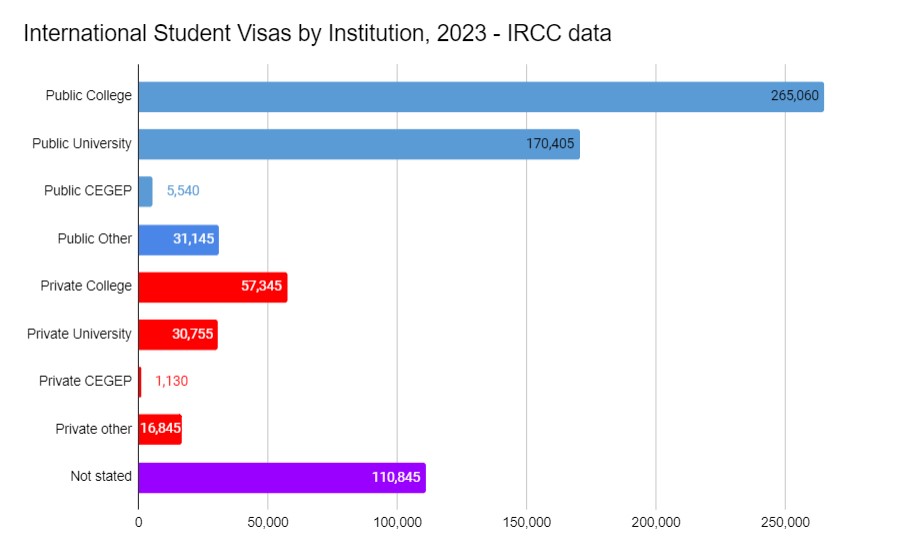
Those public post-secondary institutions are where over two million domestic students have seen their average real dollar tuition fall by 11 per cent since 2018, according to Statistics Canada.
That’s mostly because Ford’s government cut tuition by 10 per cent in 2019 after canceling the previous government’s free tuition plan for low-income students, explained Frances Woolley, a professor of economics at Carleton University.
“The stagnant provincial government funding and declining real domestic tuition has been one reason why universities have gone out and aggressively marketed to students outside Canada,” Woolley said.
Woolley argued international student visas being used as a route to Canadian citizenship has created robust demand for Canadian post-secondary education.
The average domestic tuition in Canada was $6,434, in 2023 an amount that has fallen in real dollars during Ontario’s tuition freeze because of inflation, Woolley said.
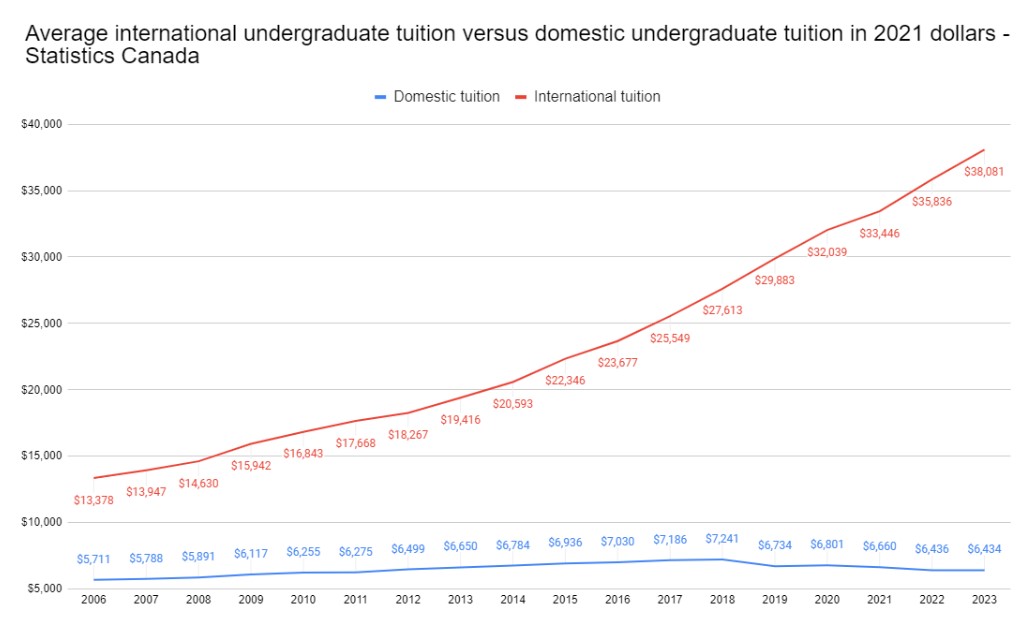
The average undergraduate international student tuition was $38,081 last year, 83 per cent higher than average domestic tuition.
Undergraduate international students saw their average tuition increase by roughly 284 per cent between 2006 and 2023.
“If you’re a university, you can charge international students whatever you like,” Woolley said, noting the absence of regulations on how much post-secondary institutions can ask for international student tuition.
Rising international tuition in the face of stagnating domestic tuition is a result of government affordability measures and post-secondary institutions getting money where they can, said Maïca Murphy, a project manager at Higher Education Strategy Associates.
“It’s one of the few levers that they have to increase revenue in the wake of falling provincial funding and freezing domestic tuition,” Murphy said.
Nova Scotia could see increased domestic tuition this coming school year to offset the lost income from the international student cap, Murphy said.
Over 16,000 international students received visas for Nova Scotia post-secondary institutions in 2023, according to IRCC data.
Falling public funding
Public colleges alone received twice as many international student visa holders than all private institutions combined in 2023, IRCC data shows.
Public universities also hosted more international students than all private institutions combined.
However, 110,845 international student visas did not list the type of educational organization they were attending last year.
Ontario colleges saw public funding as a share of their revenue decrease by 20 per cent between 2001 and 2020, while Ontario universities experienced a 10 per cent drop, according to Statistics Canada.
BC colleges got 15 per cent less of their revenue from public funding over the same time frame, while government dollars made up 11 per cent less of BC universities’ revenue over the two decades.
Statistics Canada says overall revenues for publicly funded post-secondary institutions remained relatively stable during that period.
Meanwhile, Prairie provinces may have more room for international students under the new federal visa cap system, Wooley said.
Quebec colleges, called CEGEPs, and universities receive a greater share of public funds for their revenue than any other province in the country.
Bernard Tremblay, director general of the Federation of CEGEPs said Quebec colleges will also likely see an increase in the amount of international student visas they can accept in 2024.
“Those provincial governments will have to put money into higher education that they should have put before,” Tremblay said of Ontario and BC.
William Koblensky Varela is a journalist who reports on local news, finance, and politics. He has worked for Metroland Media, BNN Bloomberg, and Carbon Pulse among others.

